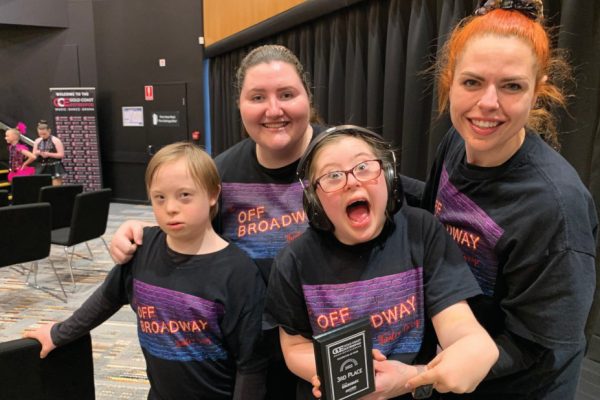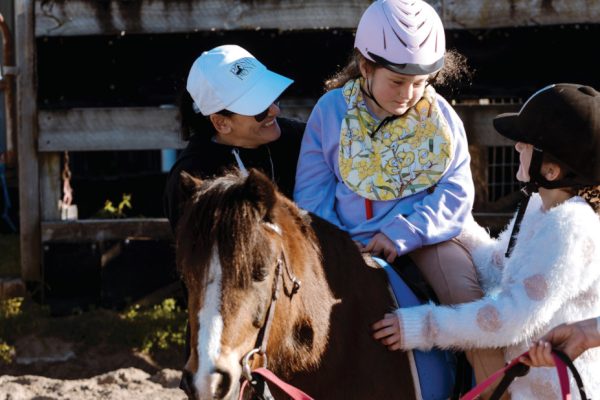
Skill-building on a budget
With today’s cost of living pressures, seeking out low-cost ways to provide our kids with meaningful development opportunities at home is more important than ever.
The good news is that there really is no need to bust your child’s precious NDIS budgets (or even your own home-grown funds!) on expensive therapy items and equipment; there are plenty of low-cost ideas that can stimulate creativity, enhance cognitive skills, and foster overall growth & development.
Messy Play
Making a fine mess is great for the development of fine motor skills (including grasp, manipulation, and muscle strength), hand eye coordination, spatial awareness, body awareness and much more.
Activity ideas – playdough (making your own with your child provides even more opportunities for skill development); rice play (fill a tray or container with rice and hide objects in it for your child to find, get out cups and spoons and bowls so they can tip and pour); playing with slime and shaving cream (hide things in it, draw pictures, letters, or numbers in it).
Construction Play
Building and stacking with blocks or plastic cups; building towers, buildings and cars out of old cardboard boxes; Lego or Duplo; Jenga; building a blanket cubby house, or putting together a train set – the list is endless. All these activities will develop fine motor skills, planning skills, patience, perseverance, problem solving and hand eye coordination.
Art and crafts
Drawing and painting on different surfaces (such as table, floor, wall or easel) will strengthen different muscles. Use scissors to cut through different materials (e.g. paper, cardboard, playdough). Painting with different objects (e.g. cotton balls, cotton buds, fork, bubble wrap), or make creatures, people or places out of recycled materials such as egg cartons, cardboard boxes, milk bottles or magazines. Fine motor skills, planning skills, hand eye coordination, muscle strength in fingers, hands, arms and shoulders; attention and concentration are all in play during creative sessions
Imaginative play
The only limits are your own imagination! Play farms, doctors, vets, schools, shops, or zoos; pretending to go on camping trips, safaris, underwater explorations, or outer space adventures. Your child can use the resources you have at home to create costumes, buildings, maps, food, storylines and more to fit the theme they have chosen. Storytelling can be made interactive and engaging by using picture cards, tactile props, and communication tools such as boardmaker or AAC devices to help everyone stories. This activity promotes language development, imagination, and collaboration, while also respecting unique communication styles.
Using puppets, dolls, stuffed animals, imitate functional actions such as eating, brushing hair, playing, jumping and other actions to build an understanding of these concepts and encourage functional play.
Structured play
Work on rule following, patience and social skills. Choose puzzles and games that can be adapted for different skill levels and abilities. Collaborative puzzles with larger pieces are great for fine motor challenges, while board games can be modified to encourage teamwork and social interaction.
Sensory nature adventures
The great outdoors is FREE and nature is a playground rich with sensory experiences. Take children on sensory nature walks where they can feel different textures, listen to bird songs, and experience the wind on their skin. Collect leaves, rocks, and flowers to create tactile art that engages their senses and encourages creativity.
Science exploration
Simple science experiments can be adapted to accommodate various abilities. Create colourful lava lamps using oil, water, and food colouring, or explore the reaction between baking soda and vinegar. These experiments offer tactile and visual stimulation, making learning a multisensory experience. A search on good old YouTube will provide heaps of ideas to adapt.
Rhythmic music-making
Music is a universal language that transcends abilities. Create simple percussion instruments using household items like rice-filled containers or bells attached to strings. Children can explore rhythm and sound, fostering their sensory integration and motor skills.
Kindness and inclusion projects
Teach children about empathy, kindness, and inclusion through projects that benefit the community. Create accessible care packages, make sensory-friendly sensory bottles, or craft cards for local hospitals. These projects emphasise the importance of giving back and fostering a sense of belonging.






